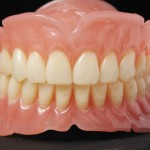
While the number of patients with no teeth is declining there are still a significant number who require complete dentures. In fabricating complete dentures support, retention and stability are fundamental considerations and occlusal schemes are an important aspect. Bilateral balanced occlusion (BBO), Lingual occlusion (LO) canine guidance (CG) and neutral-centric or zero-degree (ZD) occlusion have been described.
The aim of this review was to compare BBO with other occlusal schemes for complete dentures.
Methods
Searches were conducted in the Medline, Scopus and Cochrane Library databases supplemented by searches in the journals; American Journal of Dentistry, Clinical Oral Investigation, International Journal of Prosthodontics, Journal of Dental Research, Journal of Oral Rehabilitation, Journal of Prosthodontics, Journal of Prosthodontic Research, Journal of Advanced Prosthodontics and Journal of Prosthetic Dentistry. Randomised controlled trials (RCTs) or prospective studies comparing BBO with other occlusal schemes were considered. One reviewer abstracted the data with two reviewers assessing risk of bias using the Cochrane tool for RCTs and the Newcastle -Ottawa Scale for non-RCTs. A narrative summary was presented.
Results
- 17 studies (11 RCTs, 6 prospective studies) involving a total of 492 patients were included.
- Mean follow up period was 2.96 months (range 1-6 months).
- 9 studies compared BBO with LO.
- 7 studies compared BBO with CG.
- 3 studies compared BBO with ZD.
- 6 RCTs were considered to be at low risk of bias, 2 at unclear risk and 3 at high risk
- 1 non-RCT was considered to be at low risk of bias.
- 12 studies reported on quality of life and satisfaction
- 8 studies reported on muscle activity
Conclusions
The authors concluded: –
The present systematic review indicated that BBO does not confer better quality of life/satisfaction or masticatory performance and muscle activity. Thus, lingualised occlusion can be considered a predictable occlusal scheme for complete dentures in terms of quality of life/satisfaction and masticatory performance, while canine guidance can be used to reduce muscular activity.
Comments
We have previously blogged about an earlier review of this topic by Zhao et al (Dental Elf – 5th Sep 2013). That review included 7 RCTs, five of these are included in the current review. A number of new trials have been published since that review with the two most recent being larger with 58 and 60 patients in contrast to the smaller earlier studies. However, the available studies are still relatively small and of limited quality. The discussion section of the review is interesting and discusses some of the challenges in answering this question although there are no references to the earlier Zhao review. So while this is a declining problem more research is needed to clarify the best occlusal schemes for complete dentures.
Links
Primary Paper
Lemos CAA, Verri FR, Gomes JML, Santiago Júnior JF, Moraes SLD, Pellizzer EP. Bilateral balanced occlusion compared to other occlusal schemes in complete dentures: A systematic review. J Oral Rehabil. 2018 Jan 4. doi: 10.1111/joor.12607. [Epub ahead of print] Review. PubMed PMID: 29314199.
Other references
Dental Elf – 5th Sep 2013
Some weak evidence is available to guide choice of occlusal schemes for complete dentures.
